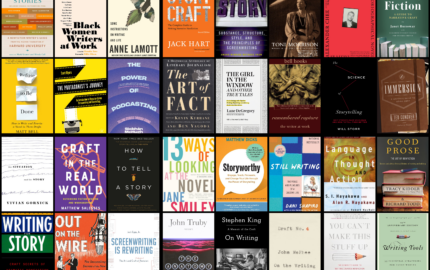EDITOR’S NOTE: In a series on making “good trouble” through journalism, Paul A. Kramer of Vanderbilt University argues for seven approaches that can help create partnerships between writers and readers to better address social problems. From his introduction: “The best narrative non-fiction writing on social problems … grapples with a particular social reality in order to question it, subject it to critical attention and convince readers that its existence and continuance is not inevitable.”
The fifth of the re-frames calls for solidarity: stories that underscore what people have in comment. Additional approaches will be posted this week and next.
We need to stand with the people whom this problem affects.
Solidarity projects present things readers know are problems in the abstract or in the lives of others, but in which the particular people affected by the problem lay on the peripheries of the reader’s circle of “we.” In readers’ minds, the problem just doesn’t seem to affect them or the people they care about most. Here the writer’s job is to bring those affected closer, in their full, complicated, idiosyncratic humanity, so readers can redefine their relationship with story subjects and widen their sense of who matters. The goal is to help readers stand alongside those most affected as they grapple with oppressive realities.
Useful approaches here cultivate perspective-taking and empathy-building, implicitly asking readers to consider: What might it be like to be this person, and experience what they do? Writers can try to immerse readers as much as possible in the tactile, lived experiences of those they may have regarded as far removed from themselves.
Here it can be crucial to make sure readers get to hear from the affected in their own words and voices, and through their actions. This opens a kind of person-to-person link between reader and subject — a highly mediated and limited one, of course, but also one with potentially transformative power.
To align reader and subject on an equal, moral plane of solidarity, writers can represent their main characters as active self-advocates, so that readers’ can relate to a mutual sense of agency. Writers also may include characters involved in admirable solidarity work themselves, serving as guides for readers as they navigate across sometimes formidable moral distances.

For a model of solidaristic writing, take Diana Hubbell’s 2021 narrative, “There Has Been Blood,” published in Eater magazine. The piece tells the story of Thai farmers struggling to retake state-owned lands illegally occupied by large-scale palm oil companies. Hubbell accompanies the farmers as they as engage in risky, courageous land seizures, cultivate subsistence farms, borrow tactics from movements of the landless in Brazil, set up their own small, self-run palm oil cooperative and promote ideals of food sovereignty. The palm oil companies send out assassins; government officials fail to investigate.
Most of the land-rights activists, she writes, were “ordinary people who never owned much of anything, drawn by the promise of a plot of earth where they could grow enough food for themselves and their children. For Chai and Usa, after nearly 30 years together scraping by on manual labor jobs and sorting through recyclables for pocket change, operating a tiny general store and having 10 rai (about 4 acres) to call their own felt like a small miracle.”
The piece tells of atrocious violence and suffering; Killers calmly shoot activists in front of their children. But Hubbard is scrupulous in standing with the activists rather than looking down at them from on high, portraying their resourcefulness and determination without pitying them. The reader’s outrage and anger are energized by bearing vicarious witness to people wh9 who remain morally in charge.
Genuine solidarity requires standing beside people who face challenging circumstances as they are — their differences notwithstanding — on the grounds of moral equality, without assimilating them to asn assumed norm. But it can be easily mistaken for (and can slide into) distancing, hierarchical relationships of sympathy and pity.
Where sympathy or pity are in play, writers can turn people who experience the problem into virtuous, suffering, hapless victims — or mold them in the image of envisioned readers in order to make them “relatable.” That they don’t get to exist in the text beyond their pain and anguish — which readers embrace from a safe, perhaps even satisfying distance — can mirror their seeming powerlessness to resist the forces that assail them.
All this said, with these cautions in mind, bonds of solidarity between writer, reader and subject are achievable, in ways that can transform readers’ sense of “we.”
Related Posts
Introduction: Making good trouble
I. Exposure: Highlighting overlooked problems
II. Urgency: Revealing the immediacy of problems
III. Activation: Challenging a sense of powerlessness
IV. Re-specification: Reconsidering causes and effects of a problem
V. Solidarity: Standing with those affected
VI. Responsibility: Connecting action to consequence
VII. Value-switching: Considering different moral stances
Conclusion: The gift of narrative nonfiction
NEXT: The shared responsibility for social problems
***
Paul A. Kramer is an associate professor at Vanderbilt University, where he teaches history and non-fiction writing. He is the author of several academic studies and essays that have been published by major news sites. His book, “The Blood of Government,” has won several awards, including being named a finalist for the Philippines National Book Award in the social science category.



